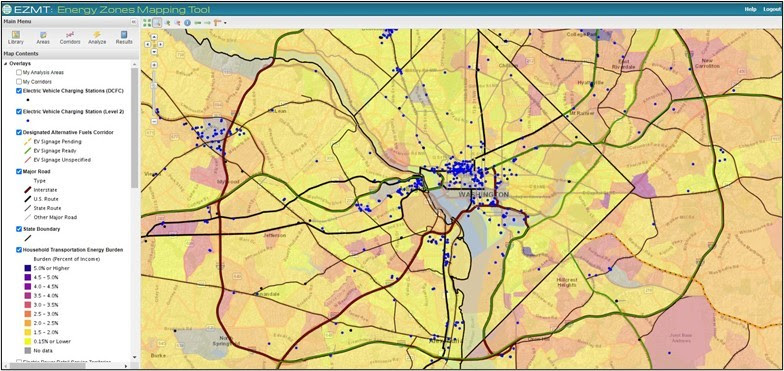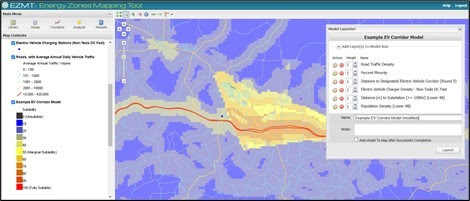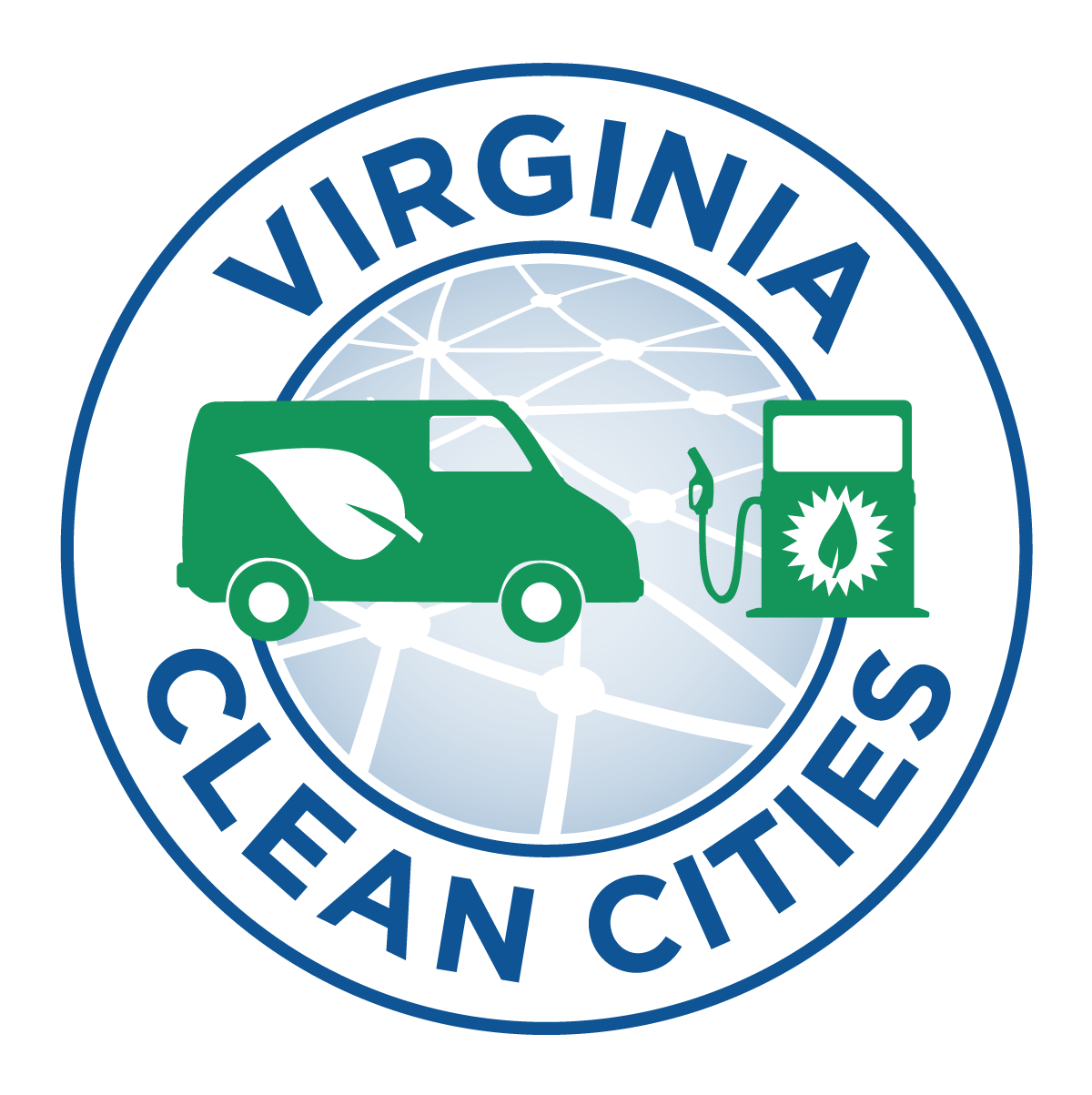
Argonne National Laboratory has expanded the Energy Zones Mapping Tool (EZMT) to support electric vehicle service equipment (EVSE) planning, with an emphasis on equity. Those wanting to plan for new EVSE can use the EZMT to look at criteria such as:
- Density of existing EVSE stations
- Proximity to designated alternative fuel corridors
- Annual average vehicle traffic
- Distance to mass-transit hubs
- Household transportation energy burden
- Percent low-income
- Percent minority
- Population density.
EZMT users can generate “heat maps” showing areas that meet combinations of 110 individual criteria. Most criteria are available for the contiguous 48 states and results are generated at a 250-meter level of detail.
Energy Zones Mapping Tool example interface with existing EVSE stations, designated alternative fuel corridors, major roads, and household transportation energy burden in the Washington, DC area

Energy Zones Mapping Tool interface with an example EV corridor model dialog, and model results superimposed with vehicle traffic and existing Non-Tesla DC Fast charging stations. This model is designed to identify urban areas close to substations and designated alternative fuel corridors, with high road traffic, moderate density of existing charging stations, and with a high minority population percentage.

Note: The Energy Zones Mapping Tool was developed through a collaboration between Argonne National Laboratory, Oak Ridge National Laboratory, and the National Renewable Energy Laboratory, and funded by the U.S. Department of Energy’s Office of Electricity.
Source: U.S. Department of Energy, Office of Electricity, Energy Zones Mapping Tool.
View the supporting data for this Fact of the Week
